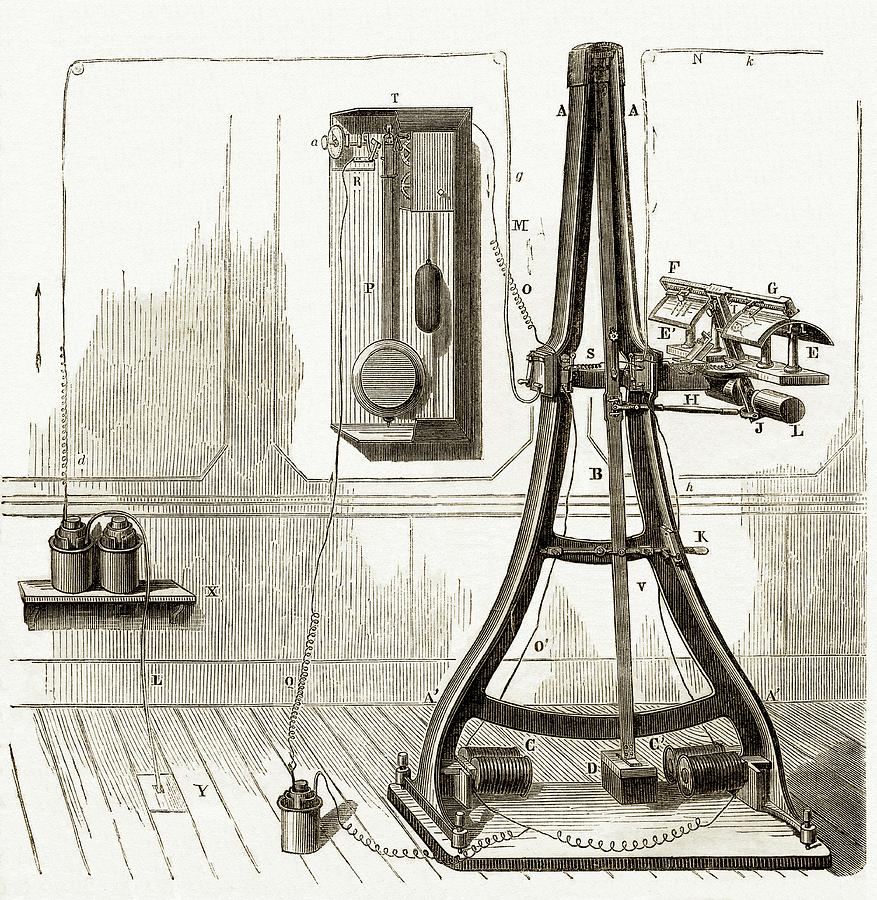History is filled with inventions that never gained widespread adoption. Some of these forgotten creations had the potential to revolutionize society, yet remain largely unknown today.
Numerous brilliant ideas have been lost to time, overshadowed by competing technologies or simply failing to catch on with the public. These overlooked innovations span various fields, from transportation and communication to energy and healthcare.
Exploring these forgotten inventions offers a glimpse into alternate paths of technological development. It prompts reflection on how different our world might be if certain ideas had taken hold. The stories behind these lost inventions also highlight the unpredictable nature of progress and innovation.
The Impact of Forgotten Inventions
Forgotten inventions have left an indelible mark on history, shaping technological progress, economic landscapes, and societal norms in ways both subtle and profound.
Lost Potential for Technological Advancement
Many forgotten inventions held the promise of revolutionizing entire industries. The Fax Machine, invented in 1843 by Alexander Bain, could have accelerated global communication decades before the telephone.
Nikola Tesla’s Wardenclyffe Tower project aimed to provide wireless electricity worldwide. Its abandonment delayed the development of wireless power transmission technologies.
The Pneumatic Subway, tested in New York City in 1870, might have transformed urban transportation. This underground system used air pressure to propel carriages through tunnels.
Economic Ramifications
The loss of groundbreaking inventions often resulted in missed economic opportunities. The suppression of the EV1 electric car in the 1990s slowed the adoption of electric vehicles, impacting the automotive industry and energy sectors.
Forgotten inventions like the Stirling engine, a highly efficient heat engine, could have reduced energy costs and fostered new industries.
Patent suppression and corporate buyouts of innovative technologies sometimes stifled potential economic growth and job creation in emerging fields.
Cultural and Social Effects
Forgotten inventions have influenced social norms and cultural development. The mechanical television, invented in the 1920s, might have democratized broadcasting earlier, altering the media landscape.
The Babbage Analytical Engine, conceived in the 1830s, could have ushered in the computer age a century sooner, dramatically changing work and communication patterns.
Some lost inventions, like more sustainable packaging materials, might have mitigated environmental issues, shaping different societal attitudes towards consumption and waste.
Communication Breakthroughs
Early inventors developed remarkable devices that aimed to revolutionize long-distance communication. These innovations, though largely forgotten today, had the potential to transform how people exchanged information across vast distances.
The Pantelegraph
The Pantelegraph, invented by Italian physicist Giovanni Caselli in 1856, was an early fax machine. It transmitted images over telegraph wires using synchronized pendulums and electrochemical paper.
The device could send handwritten messages, signatures, and simple drawings between distant locations. Caselli’s invention achieved commercial success, operating between Paris and Lyon from 1865 to 1870.
Despite its promise, the Pantelegraph fell out of use due to technical limitations and competition from more reliable telegraph systems. Its core concepts later influenced the development of modern fax technology.
Harmonischer Telegraf
Elisha Gray’s Harmonischer Telegraf, patented in 1876, was a groundbreaking attempt at multiplex telegraphy. It used different audio frequencies to transmit multiple messages simultaneously over a single wire.
Gray’s system employed tuning forks to generate and detect specific tones, allowing up to eight messages to be sent concurrently. This multiplexing concept significantly increased the capacity of existing telegraph lines.
Although Alexander Graham Bell’s telephone patent overshadowed Gray’s invention, the Harmonischer Telegraf laid important groundwork for future telecommunications technologies. Its principles found applications in early telephone systems and radio communications.
Transportation Innovations
Groundbreaking inventions in transportation could have revolutionized travel and shipping. These innovations offered potential solutions to common problems in railways and marine propulsion.
Bessemer’s Railway Air Brake
Henry Bessemer patented an air brake system for trains in 1852. The design used compressed air to apply brakes simultaneously across all cars. This innovation promised faster stopping times and improved safety.
Bessemer’s air brake operated through a pipe running the length of the train. When activated, it released air pressure to engage the brakes on each car. The system aimed to replace less efficient manual braking methods.
Despite its potential, Bessemer’s air brake wasn’t widely adopted. Railway companies were slow to invest in new technology. George Westinghouse later developed a similar system that became the industry standard.
Crossley Brothers’ Auto-Marine Engine
In 1905, the Crossley Brothers created an engine that could switch between gasoline and heavy oil fuel. This versatile power plant was designed for use in both automobiles and boats.
The Auto-Marine engine featured a unique cylinder head that allowed for easy fuel changes. It could run on gasoline for high-speed operation or switch to heavy oil for economical cruising.
This adaptable engine offered flexibility for long-distance travel. Vehicles could use cheaper fuel when available, potentially reducing operating costs. However, the invention failed to gain widespread commercial success.
Competing engine designs and changing market demands limited the Auto-Marine’s adoption. The concept of multi-fuel engines resurfaced decades later in military and commercial applications.
Medicine and Health Contributions
Two remarkable inventions in the early 20th century had the potential to revolutionize emergency medicine and material science. These innovations offered groundbreaking solutions to pressing medical and industrial challenges of their time.
The Pulmotor
The Pulmotor, invented by Heinrich Dräger in 1907, was the first electrical respirator. This device could have saved countless lives by providing artificial respiration to patients unable to breathe on their own.
The Pulmotor used a cylinder of compressed oxygen and a rubber mask to deliver air to the patient’s lungs. It alternated between positive and negative pressure, simulating natural breathing patterns.
Despite its potential, the Pulmotor faced skepticism from the medical community. Some doctors questioned its safety and effectiveness, limiting its widespread adoption.
Bakelizer
Leo Baekeland’s Bakelizer, created in 1907, produced the first fully synthetic plastic called Bakelite. This invention paved the way for modern plastics and could have transformed medical equipment manufacturing.
The Bakelizer was a high-pressure vessel that combined phenol and formaldehyde to create a durable, heat-resistant material. Bakelite’s properties made it ideal for medical instruments and prosthetics.
Bakelite’s potential in medicine was significant. It could have led to more affordable and readily available medical devices, improving healthcare access globally.
However, concerns about toxic ingredients and the emergence of newer plastics limited Bakelite’s long-term impact in the medical field.
Advancements in Computing
Early computing innovations laid the groundwork for modern digital technology. Two key inventions pushed the boundaries of calculation and data processing capabilities in the 19th century.
The Difference Engine
Charles Babbage designed the Difference Engine in the 1820s. This mechanical calculator could solve polynomial equations and produce mathematical tables. It used a system of gears and levers to perform calculations.
The machine stood over 8 feet tall and weighed around 15 tons. Despite its promise, Babbage never completed a full-scale working model during his lifetime.
In 1991, the Science Museum in London built a functioning Difference Engine based on Babbage’s original plans. This demonstrated the viability of Babbage’s concept over 150 years later.
The Analytical Engine
Babbage’s Analytical Engine, conceived in the 1830s, was a more ambitious project. It incorporated features of modern computers, including memory, a central processing unit, and the ability to be programmed.
The design used punched cards for input, similar to those used in Jacquard looms. It could store up to 1,000 numbers of 50 decimal digits each in its memory.
Ada Lovelace, often considered the first computer programmer, wrote detailed notes on the Analytical Engine. She described how it could be used to calculate Bernoulli numbers, effectively creating the first computer algorithm.
Though never built in Babbage’s time, the Analytical Engine’s concepts influenced the development of electronic computers in the 20th century.
Domestic and Personal Devices
Two innovative household appliances from the early 20th century could have revolutionized daily life. These inventions aimed to simplify common chores and improve home comfort.
Gibbs Refrigerator
The Gibbs Refrigerator, invented by James Gibbs in 1929, utilized a unique absorption cooling system. This design eliminated the need for moving parts, making it quieter and more efficient than conventional refrigerators.
Gibbs’ invention used a mixture of hydrogen gas and ammonia to create a cooling effect. The system operated silently and required no electricity, running solely on a small gas flame or other heat source.
Despite its innovative approach, the Gibbs Refrigerator never gained widespread adoption. Manufacturing challenges and competition from electric models limited its commercial success.
Farnsworth’s Electric Washing Machine
Philo Farnsworth, better known for his contributions to television technology, also designed an advanced electric washing machine in the 1940s. His invention incorporated several features that were ahead of its time.
Farnsworth’s washing machine used ultrasonic waves to clean clothes more effectively than traditional agitators. This method promised gentler treatment of fabrics while achieving superior cleaning results.
The machine also featured a built-in water recycling system, reducing water consumption. Additionally, it included a spin-dry function, eliminating the need for a separate wringer or dryer.
Despite its innovative features, Farnsworth’s washing machine never reached mass production. The inventor’s focus on television technology and lack of backing from major appliance manufacturers contributed to its obscurity.
Energy and Industrial Technologies
Two innovative technologies from the past had potential to revolutionize energy production and industrial processes. These inventions, though largely forgotten today, offered unique approaches to harnessing natural forces and improving engine efficiency.
Cloudbuster
Wilhelm Reich’s cloudbuster device, developed in the 1950s, aimed to manipulate atmospheric energy. The contraption consisted of hollow metal pipes connected to water sources, purportedly drawing orgone energy from the sky to influence weather patterns.
Reich claimed his invention could create or disperse clouds, potentially alleviating droughts. He conducted experiments in Arizona, reporting successful rainmaking attempts. Despite these claims, the scientific community largely dismissed the cloudbuster as pseudoscience.
The device never gained widespread acceptance or underwent rigorous testing. Its potential impact on agriculture and water management remains unexplored.
Holzwarth Gas Turbine
Hans Holzwarth’s gas turbine, patented in 1908, offered a novel approach to power generation. Unlike conventional turbines, it used constant-volume combustion in separate chambers, potentially increasing efficiency.
The design featured a series of combustion chambers around a central rotor. Fuel and air mixtures were ignited sequentially, driving the rotor through rapid pressure increases. This pulsed operation differed from continuous-flow turbines.
Holzwarth’s turbine showed promise in early tests, achieving higher thermal efficiency than contemporary steam engines. However, mechanical complexities and material limitations hindered its development. The invention was eventually overshadowed by simpler continuous-flow designs.
Rediscovery and Replication
Technological forensics and modern reconstruction efforts have breathed new life into forgotten inventions. These approaches offer insights into historical innovations and their potential applications in today’s world.
Methods of Technological Forensics
Technological forensics employs various techniques to uncover and understand lost inventions. Archaeologists use ground-penetrating radar and laser scanning to reveal hidden structures and artifacts. Chemical analysis helps identify materials used in ancient technologies.
Historians pore over manuscripts, patents, and old blueprints to piece together information about forgotten innovations. Digital reconstruction tools create 3D models of historical devices, allowing researchers to visualize and study their mechanisms.
Interdisciplinary collaboration between scientists, engineers, and historians has proven crucial in deciphering complex inventions. This approach combines expertise from multiple fields to interpret and contextualize discoveries.
Modern Attempts at Reconstruction
Researchers and enthusiasts have made significant strides in recreating forgotten inventions. The Antikythera mechanism, an ancient Greek astronomical calculator, has been reconstructed using modern materials and techniques.
3D printing technology has enabled rapid prototyping of historical devices, allowing for testing and refinement of designs. This method has been used to replicate Leonardo da Vinci’s inventions, bringing his sketches to life.
Some reconstructions aim to improve upon original designs. The recreated Babbage Difference Engine, for instance, incorporates modern manufacturing processes while staying true to its 19th-century concept.
Crowdfunding platforms have supported reconstruction projects, engaging the public in rediscovering lost technologies. These efforts often combine historical accuracy with educational outreach, sparking interest in forgotten innovations.
References
- Smithsonian Institution (n.d.) – Greek Fire: The Byzantine Secret Weapon That Changed Naval Warfare Link
- National Geographic (n.d.) – Flexible Glass: The Lost Roman Invention That Could Have Transformed Manufacturing Link
- Scientific American (n.d.) – Damascus Steel: The Ancient Metal with Unmatched Strength and Mystery Link
- American Society of Civil Engineers (n.d.) – Roman Concrete: The Enduring Legacy of an Ancient Building Material Link
- British Museum (n.d.) – Stradivarius Violins: The Unparalleled Craftsmanship of the Stradivari Family Link




